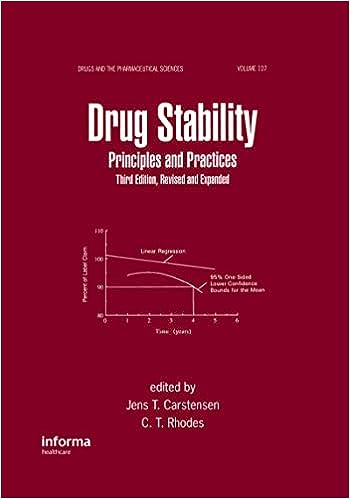Stability study design is a crucial aspect of pharmaceutical development aimed at assessing the stability of drug products under various conditions over time. It involves careful planning, execution, and analysis to ensure the reliability and validity of stability data.
Key Components of Stability Study Design
A well-designed stability study encompasses several key components:
- Study Objectives: Clearly define the objectives of the stability study, such as determining the shelf life, identifying degradation pathways, or evaluating the effect of storage conditions on product stability.
- Selection of Drug Products: Choose appropriate drug products for stability testing based on factors such as dosage form, formulation complexity, regulatory requirements,
Study Execution
Once the study design is finalized, it is essential to execute the stability study with meticulous attention to detail:
- Sample Preparation: Prepare samples according to the predetermined sampling plan, ensuring consistency and reproducibility.
- Storage Conditions: Maintain the specified storage conditions throughout the study period, monitoring temperature, humidity, and other environmental factors regularly.
- Sample Analysis: Analyze samples at scheduled time points using validated analytical methods to assess stability parameters such as appearance, potency, purity, and degradation products.
- Data Recording: Record and document all relevant data accurately and comprehensively, including sample information, analytical results, and any deviations from the study protocol.
- Deviation Management: Address any deviations from the study protocol promptly, documenting the root causes and implementing corrective and preventive actions as necessary.
Data Analysis and Interpretation
After completing sample analysis, it is crucial to analyze and interpret the stability data effectively:
- Trend Analysis: Evaluate trends in stability data over time to identify any patterns or changes indicative of degradation or instability.
- Statistical Analysis: Apply appropriate statistical techniques to analyze the data, assess variability, and determine the statistical significance of observed changes.
- Comparison with Specifications: Compare stability data with predetermined acceptance criteria, specifications, and regulatory requirements to determine product stability and shelf life.
- Decision Making: Make informed decisions based on the stability study results, such as extending shelf life, modifying storage conditions, or reformulating the product to improve stability.
Conclusion
In conclusion, stability study design is a critical aspect of pharmaceutical development, essential for ensuring the quality, safety, and efficacy of drug products. By carefully planning and executing stability studies and analyzing the resulting data, pharmaceutical companies can make informed decisions about product stability, shelf life, and regulatory compliance, ultimately benefiting patients and healthcare providers.

